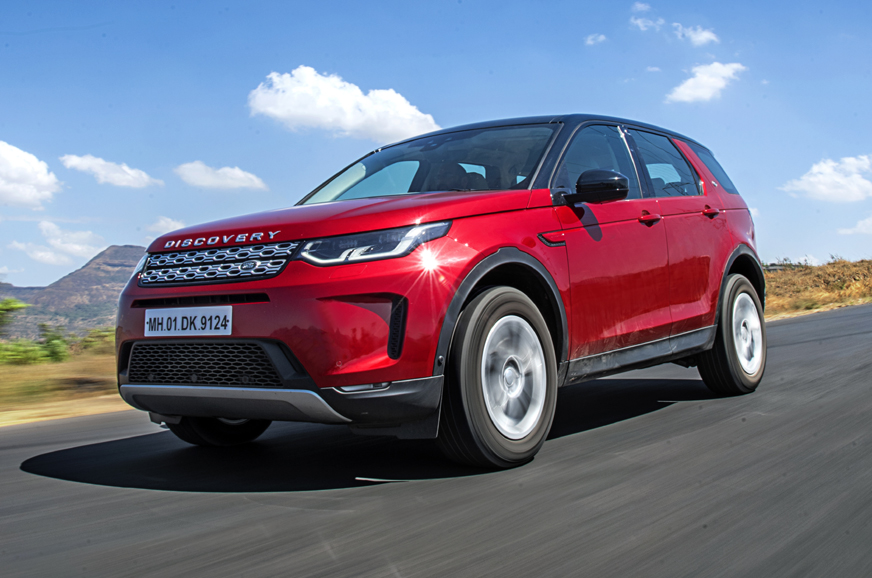Review: Land Rover Discovery Sport facelift BS6 review, test drive

When we talk about a facelift, it usually involves new bumpers, new headlamps and tail-lamps, and at times, a minor update in the engine bay. The Discovery Sport's facelift, however, is different. Launched in India five years ago, Land Rover has now given the Discovery Sport a much-needed, mid-life nip and tuck, and while it's referred to as a 'facelift', a huge change is that they have switched to the new Premium Transverse Architecture – the same platform that underpins the brand-new Range Rover Evoque.
What’s new on the outside?
At first glance, the updates do seem visual, with the basic profile and styling all very familiar. But there are elements similar to the ones on the larger, full-size Discovery, especially around the front; the bumper is now smoother, more aggressive and has a lot more girth to it, at least visually. Seen here is the entry-level S variant and it gets a pronounced silver skid plate, with unpainted claddings around the edges and sides. The grille is painted in a similar shade of silver and sports the typical Land Rover honeycomb design, while the headlamps looks sharper, akin to the ones on the bigger Discovery, with new LED daytime running lights and LED lighting standard across variants. Moving to the side and rear, the changes are minimal, but it gets new wheels, and an updated bumper with a set of new LED tail-lights with detailed lighting elements.
What’s new inside?
It's on the inside that the changes are obvious. For starters, the rotary knob gear selector is gone, replaced now with a more traditional lever. You also have a much nicer-looking dashboard with open-pore wood inserts and a huge matte-finished, soft- touch dashboard. There’s also a large, 10.0-inch touchscreen with a brand-new user interface, and a gloss-black centre console that houses the climate control and drive mode functions. While the top-spec variant gets a fully digital instrument cluster, the base S variant gets a part-digital, part-analogue cluster that looks like a bit of an afterthought at first, but is actually rather well implemented. This variant misses out on the ‘ClearSight’ rear-view camera and mirror screen package but Land Rover has kept features like the massive panoramic sunroof and powered tailgate.
One of the main draws of the Land Rover Discovery Sport has been its 7-seat layout, and that seating configuration continues on the updated model too. But while there is a decent amount of space, the rear seat offers slightly less under-thigh support. Also, the seats – front and rear – are overly firm and just don’t feel as plush as compared to some of its rivals. The third row is best reserved for children or for short trips, as there just isn’t enough space for an adult to spend extended amount of time there.
Updated BS6 powerplants!
Land Rover has updated the Discovery Sport with a set of BS6-compliant, 2.0-litre petrol and diesel engines. The one we have here is the D180 that makes 180hp and 430Nm of torque. And the first thing you notice is how the NVH levels are significantly lower now. While there is still some gruffness and it can’t really match the level of refinement of German cars, it is an improvement over the earlier Discovery. The engine is mated to a 9-speed torque converter that is now more responsive as compared to what it was earlier – both in Drive and Sport modes. If you have a light enough right leg, the Discovery Sport will be happy to cruise around in the 9th gear at speeds as low as 80kph, something most other SUVs with as many gears do not do. However, that said, when you do pin the throttle down and munch through the revs, power delivery starts to taper off rather quickly with a mildly disappointing top-end performance.
How does it drive?
If you have spent some time behind the wheel of the pre-facelift Discovery Sport, the difference in handling is something you'll notice. The steering gives you confidence in corners, although it’s a bit on the heavier side and that might be a bit off-putting to urban users. Ride quality over extremely bad and broken roads is noteworthy, and it cushions out the worst of our roads quite well. On the flip side, the Disco Sport does pick up the small ridges and partly broken stretches, and there's also discernible body roll while changing lanes or cornering hard.
Is it worth it?
So is the update big enough for you to take notice? Yes, the SUV certainly shows a remarkable improvement over the pre-facelift Discovery Sport, and while engine refinement is still off the mark compared to rivals and its handling is not as sharp, it does offer a contemporary look, a cabin packed with tech (especially the R-Dynamic variant), the option to seat seven in a pinch though, and of course, if you intend, the ability to go off-road with relative ease. What's more, with the predatory pricing undercutting most of its rivals, the Discovery Sport facelift does make a strong case for itself.

No comments
please do not enter any spam link in the comment box